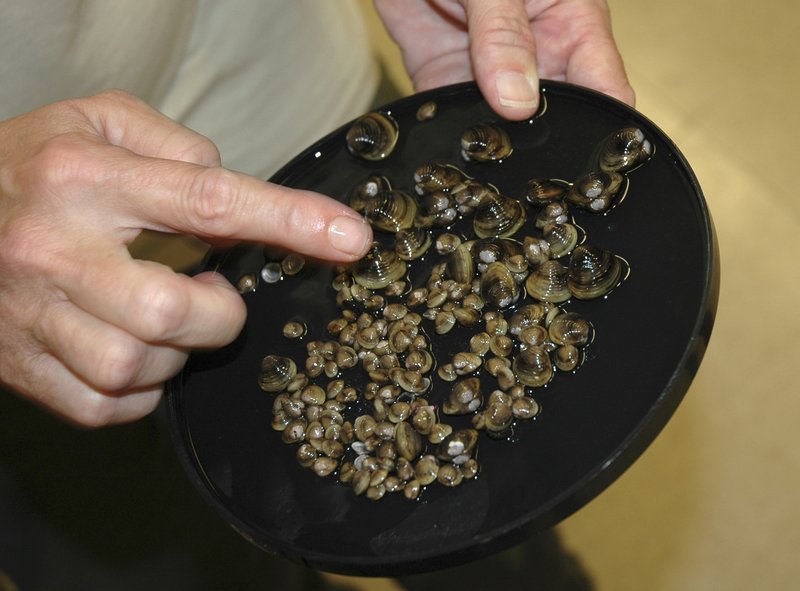BOLTON LANDING, N.Y. – A thumbnail-sized clam blamed for clouding the azure bays of Lake Tahoe high in the Sierra Nevada has now turned up in a mountain-ringed Adirondack lake renowned for its limpid, spring-fed waters.
The invasive Asian clam, Corbicula fluminea, is known as the “good luck clam” in its native Asia. But in Lake George, scientists call it an unwelcome invader that could cause ecological and economic harm.
An intensive search launched after a few tiny clams were found at a sandy beach in August turned up no additional infestations, suggesting the invasion was discovered before it had a chance to spread across the 32-mile-long lake, a popular vacation spot.
“The next step is to determine their age and concentration by taking sediment core samples,” said Sandra Nierzwicki-Bauer, director of Rensselaer Polytechnic Institute’s Darrin Fresh Water Institute. “Then we’ll decide what to do about them.”
Since scattered numbers of Asian clams were discovered in Lake Tahoe in 2002, the population there has exploded, thanks to the mollusk’s ability to self-fertilize and release up to 2,000 juveniles per day. Their waste has helped trigger algae blooms that turned the cobalt blue water into bright green.
Besides promoting algae overgrowth, Asian clams can also clog water intake pipes and other structures, and their sharp shells can befoul swimming beaches. The fast-growing clams, which mature in months, also compete for food with slow-growing native freshwater mussels, which can live 60 years.
As part of a $1.4 million clam-eradication effort at Lake Tahoe, scuba-diving scientists unrolled long plastic mats on the bottom of coves this summer to smother clam populations that can reach concentrations of 5,000 per square yard.
“A lot of comparisons are made between Lake Tahoe and Lake George,” Nierzwicki-Bauer said. “Both are known for gorgeous scenery, excellent water quality and high biodiversity. Both are very important economically as well as ecologically.”
Asian clams were long believed to be unable to reproduce in cold Northeastern waters.
The Darrin Fresh Water Institute is on a section of Lake George once known as “Millionaire’s Row” for the mansions of wealthy industrialists that once graced the shore. Jeremy Farrell, a graduate student there, happened upon the invasive clams a couple of weeks ago when he was playing at a nearby beach with his toddlers.
Further investigation by researchers dumping sand through brass sifters revealed thousands of clams ranging in size from a sesame seed to a peach pit. The institute and other Lake George environmental organizations contracted with Dan Marelli, a Tallahassee, Fla., mollusk specialist, to lead a group of scientific divers in a survey of the invasion’s extent.
The divers found no clams beyond the 2½-acre area they first were found. The next step, Nierzwicki-Bauer said, is to develop a management plan. Most likely, that will involve placing the mats, called benthic barriers, on the sandy lake bottom to smother the clams.
Organizations on Lake George have had success battling other invasive species. An infestation of zebra mussels has been virtually eradicated by volunteer scuba divers who hand-picked 25,000 of them from rocks.
“Public awareness is a key element in early detection of invasive species and prevention of their spread,” Nierzwicki-Bauer said.
Send questions/comments to the editors.



Success. Please wait for the page to reload. If the page does not reload within 5 seconds, please refresh the page.
Enter your email and password to access comments.
Hi, to comment on stories you must . This profile is in addition to your subscription and website login.
Already have a commenting profile? .
Invalid username/password.
Please check your email to confirm and complete your registration.
Only subscribers are eligible to post comments. Please subscribe or login first for digital access. Here’s why.
Use the form below to reset your password. When you've submitted your account email, we will send an email with a reset code.